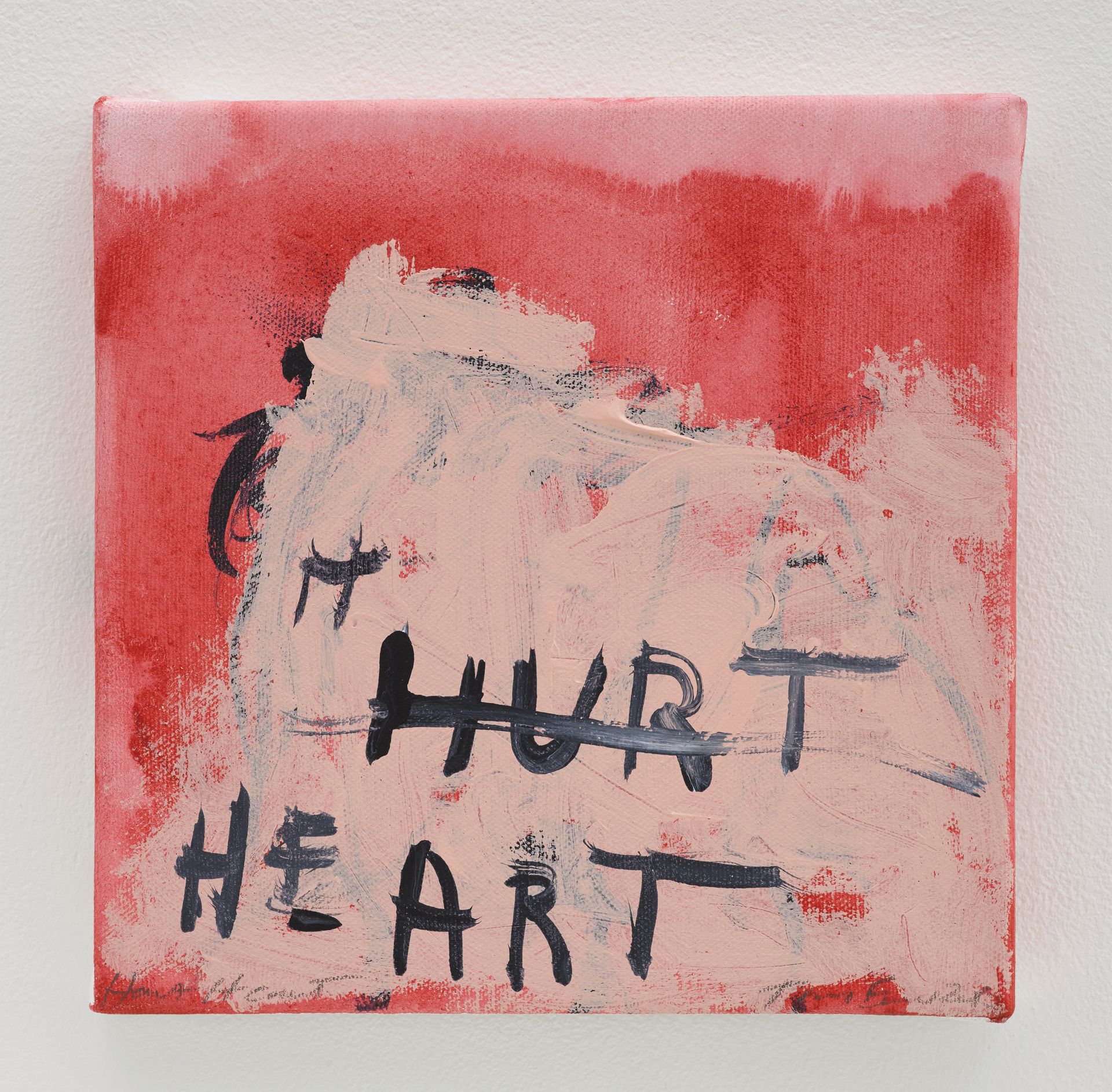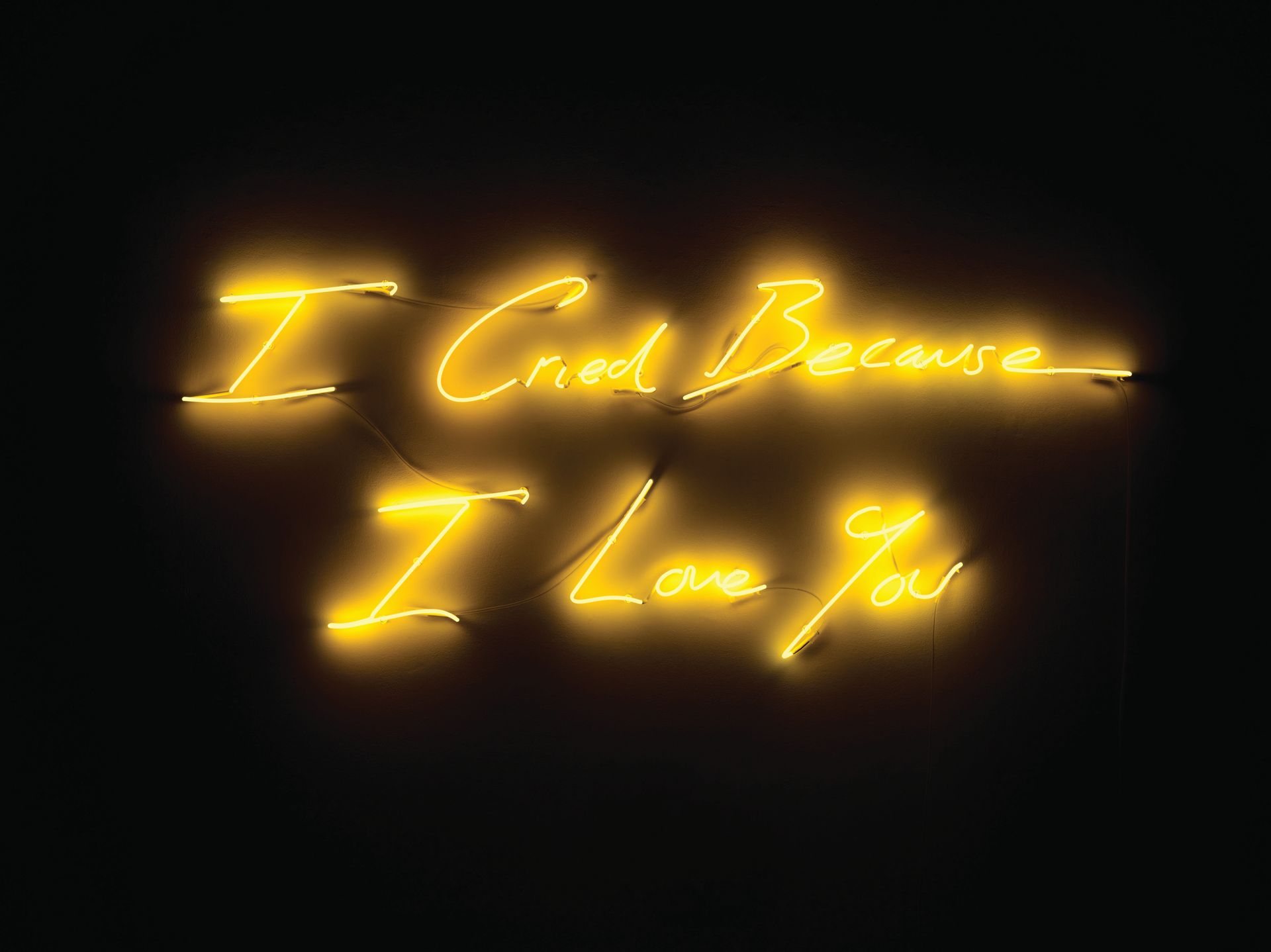Last summer, under an olive tree in her garden in France and wearing her father’s white funeral shroud, Tracey Emin married a large ancient stone. A series of drawings she made of the union weave a thread through the artist’s first solo exhibition in China (in 2014, she showed a large neon work in Hong Kong’s Peninsula hotel). Her show, I Cried Because I Love You (until 21 May), is a joint presentation by Lehmann Maupin and White Cube and is displayed across their Hong Kong galleries. Love has been a constant source of inspiration for Emin, and here she discusses marriage, soul mates and how her perception of love has become more spiritual with age.

The Art Newspaper: Is the title of the exhibition about anyone in particular, or does it have a more universal meaning?
Tracey Emin: It is definitely universal. Some people think it sounds sad, but I think that, for many people, they have felt tears of joy when they have really been in love.
You formed a union with a stone outside your studio in the south of France last summer. What does this mean to you?
It just means that at the moment I am not alone; somewhere on a hill facing the sea, there is a very beautiful ancient stone, and it’s not going anywhere. It will be there, waiting for me.
Have you ever truly been in love? Do you hope to find love with another person again?
At the moment, I am fascinated by the letters of Pope John Paul II. They are a clear illustration that love can present itself in many ways, and probably the more complex, the more passionate [ways]. Yes, I really, really hope to feel love one day.

How has your understanding of love changed as you have got older?
I think that when we are younger, it is totally wrapped up in lust and physical conquest. My idea of love now is so heightened and spiritual that I really am looking for a soul mate; nothing else will do. Maybe when I was 18, I could have met someone who was my soul mate, but [I] would not have known. I am very happy with the few people I have loved in my lifetime and I consider them to be extremely close friends. Not everyone can say that.

There is a series of self-portraits in this show that read like a love story when viewed one after the other. Do you paint each work individually or do you conceive of groups of works?
I don’t conceive groups of work; they just happen like an uncontrollable impulse. There definitely is some cathartic relationship with the work I make, and I’m trying to crack the code myself.
Your figurative works in particular hover between drawing and painting. Where does one practice end and the other begin?
Sometimes a painting can take between seven and ten years to finish. They are all about painting layers and the layering of paint. There are other paintings that start with a very neat primed canvas and I make a large painted drawing on it. There is not really a line where one ends and the other begins, and I treat most of my gouaches and watercolours as drawings, even though they are not.
What do you discover about yourself—physically or mentally—when you draw or paint yourself?
That I am not size 0 any more, that I have undulating rolls of flesh, my skin has grey areas that sag, I have veins and I am nowhere near as supple as I once was. I draw how I feel internally as much as externally. At the moment, I am drawing from the memory of how things once were.
There are a couple of text-based paintings in the show. These stand out as quite different from your earlier works incorporating writing. Would you say they mark a departure from your earlier work?
No, they do not—they are the same, just done in a different medium. Hurt Heart may have, at one time, been a neon or a patch or a grand statement on a blanket. Another Love Story is my storyboard of love. I have been working on that painting for five years. I still don’t know if it’s finished, but I like the way it looks. If only love could be so simple.
How do you feel to be showing in China for the first time? Do you think your work resonates with a history of Chinese ink paintings at all?
No; my work is very European-based. I am excited to be showing in Greater China, as it’s a whole new audience for my work.
You are in conversation with Tim Marlow at Art Basel in Hong Kong. What will you be discussing at the fair?
First, I am honoured that Sir David Tang will introduce myself and Tim Marlow. It is great to have such an esteemed Hong Kong impresario involved. Tim and I will be discussing painting, what it means to me and what my future holds. And the meaning of love.
• Real Talk: Tracey Emin, the artist with Tim Marlow and David Tang, Thursday 24 March, 2pm, auditorium, Entrance Hall 1A, Convention Centre

